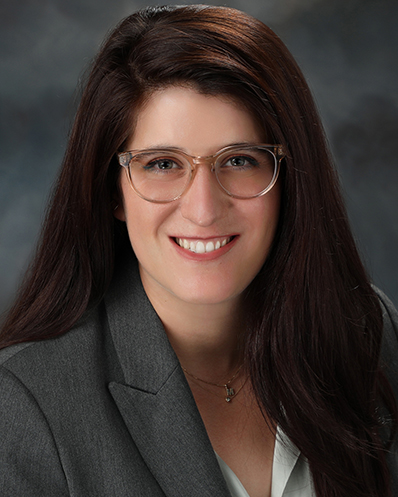
Surgery for GERD
It’s not unusual to have some heartburn from time to time, especially after eating certain foods or a large meal too close to bedtime. That uncomfortable feeling in your chest is a result of acid reflux — in other words, stomach acid that has involuntarily moved up into your esophagus, the tube that connects your mouth and stomach.
Acid reflux (short for gastroesophageal reflux) is actually a normal process that can occur several times a day without causing any noticeable health issues. And if relief from heartburn is needed, sometimes just using an antacid from your own medicine cabinet is all it takes.
However, when acid reflux gets more frequent or severe, starts causing damage to the esophagus, throat, or respiratory tract, it’s more than the occasional annoying heartburn. If mild acid reflux happens to you at least twice a week, or moderate to severe acid reflux happens at least once a week, then you may have GERD. This common condition affects about 20% of the U.S. population.
What Causes GERD?
To better understand GERD, it helps to know what exactly is happening that enables acid reflux. At the entrance to your stomach is a valve, which is a ring of muscle called the lower esophageal sphincter (LES). Normally, the LES closes once food passes through. But if the LES doesn't close all the way, or if it opens too frequently, acid that’s in your stomach can escape and move up into your esophagus.
So, if some acid reflux is normal, what makes it become chronic and severe in the form of GERD? The cause of GERD is complex and may involve several contributing factors. It varies from person to person, but it also can vary even within the same individual at different times.
Below are some of the causes of really bad heartburn and GERD:
Lower Esophageal Sphincter Abnormalities
In some cases, the LES has either abnormally weak contractions or abnormal relaxations that occur for unusually long periods of time, particularly after meals when the stomach is full. Both abnormalities are acid reflux enablers.
Hiatal Hernia
Normally the diaphragm, a muscle separating your stomach from your chest, is at the same level as the LES and helps keep acid in your stomach. But with a hiatal hernia, part of the upper stomach and the LES push up through the diaphragm into the chest. With the LES and diaphragm now at different levels, they’re no longer one strong team fighting reflux together but instead two less effective barriers.
Abnormal Esophageal Contractions
Swallowing helps you eliminate acid in your esophagus and causes a wave of muscle contractions called peristalsis, which pushes food and saliva into your stomach. When the contractions don’t work quite right, refluxed acid is not properly pushed back into the stomach.
Gastroparesis
This term indicates that the stomach takes too long to empty after a meal. Since most reflux during the day occurs after meals, this condition prolongs the period of time during which reflux is more likely to occur.
Other Contributing Factors Include:
- Lying on your back or bending at the waist shortly after eating a heavy meal
- Eating foods that cause acid reflux
- Snacking close to bedtime
- Being overweight or obese
- Smoking
- Being pregnant
- Taking aspirin, ibuprofen, blood pressure medications, and certain muscle relaxers
GERD Symptoms
One of the most common symptoms of GERD is an ongoing struggle with heartburn, in which the burning or discomfort may move from your stomach to your abdomen or chest, or even up into your throat. Because heartburn occurs in your digestive system, the term is confusing because it really has nothing to do with your heart — although the pain is sometimes mistaken as a sign of a heart attack.
Needing over-the-counter medications for heartburn more than twice a week is often a red flag for GERD. You may also find that swallowing is getting more difficult or feel like you have a lump in your throat. Some experience a regurgitation of a sour or bitter tasting acid in the back of the throat or mouth. If you’re more prone to nighttime acid reflux, symptoms can include a chronic cough, disrupted sleep, laryngitis or new or worsening asthma.
Some other less common symptoms of GERD may include:
- Bloating
- Excessive burping
- The sensation of food being stuck in your throat
- Relentless hiccups
- Wheezing, hoarseness, or a chronic sore throat
- Nausea
- Bloody or black stools or bloody vomiting
- Inexplicable weight loss
Complications of GERD
Wherever you are on the wide-ranging spectrum of GERD symptoms, it’s important to take them seriously and talk to a doctor about the right treatment for your situation.
Over time, GERD can lead to chronic inflammation in your esophagus, resulting in other health complications such as:
- Narrowing of the Lower Esophagus — The acid can cause scar tissue to form, narrowing the pathway and making it difficult to swallow.
- An Esophageal Ulcer — This open sore forms when the acid wears away tissue in the esophagus, resulting in bleeding, pain, and problems with swallowing.
- Precancerous Changes to the Esophagus (Barrett’s Esophagus) — Damage from acid can cause structural changes in the tissue lining the lower esophagus that are associated with a higher risk of esophageal cancer.
How is GERD Diagnosed?
If you’re struggling with acid reflux symptoms, your doctor may be able to confirm a GERD diagnosis with a simple physical examination and a discussion of your history and symptoms. However, you may also need to have some further testing, both to make sure it’s GERD and to see if it’s caused any complications.
GERD may be diagnosed through:
Upper Endoscopy
Using a thin, flexible tube with a light and camera called an endoscope, your doctor looks at your esophagus and stomach to determine if there is acid reflux or swelling in your esophagus. A tissue sample may also be collected to test for Barrett’s esophagus.
Ambulatory Acid (pH) Probe Test
Your doctor places in your esophagus a tiny monitor, which either plugs into a mini-computer that you wear or allows wireless transmission to a receiver on your waist. Over a 24-hour period, the monitor measures the amount of acid that flows into your esophagus from your stomach.
Esophageal Manometry
To measure the contractions in your esophagus when you swallow, your doctor passes a thin, pressure-sensitive tube through your nose, throat, and esophagus and into the stomach. This is also an opportunity to identify other problems with movement and pressure in the esophagus.
X-Ray of the Upper Digestive System
After you drink a chalky liquid that creates a silhouette of your esophagus, stomach and upper intestine, your doctor takes X-rays. You may also be asked to swallow a barium pill to help diagnose a narrowing of the esophagus.
GERD Treatment
Most people can manage the discomfort of GERD with lifestyle changes and over-the-counter medications. Those will certainly be the first steps to try. Sometimes, stronger medication or surgery is ultimately necessary to manage symptoms for your comfort.
Changes in Diet and Lifestyle
One of the most effective ways to treat acid reflux disease is to eat smaller meals more frequently throughout the day and stay away from foods and beverages that are likely to trigger symptoms.
When you have GERD, you should avoid the following foods:
- Foods that boost the amount of acid your stomach makes: Fatty or fried foods, whole and chocolate milk, spearmint and peppermint, chocolate, cooking oils and creamy soups
- Foods that irritate the esophagus: Tomatoes and citrus fruits including grapefruits, oranges, and pineapples, as well as alcoholic, carbonated or caffeinated beverages
- Foods that make you swallow more air: Hard candy and gum
Along with adjusting eating patterns, you can also take other steps in your daily life to minimize GERD symptoms. Your doctor may recommend that you try one or more of the following:
- Stop smoking
- Don't eat at least two to three hours before lying down
- Sleep in a chair for daytime naps
- Put blocks under the head of your bed to raise it at least 4 to 6 inches
- Avoid wearing clothes or belts that are tight
- Strive to maintain a healthy weight through exercise or diet
- Ask your doctor if your medication may be triggering GERD symptoms
Over-the-Counter or Prescription Medications
You’re probably already familiar with common antacids such as Alka-Seltzer, Rolaids, or Mylanta. These over-the-counter treatments are designed to neutralize your stomach acid through chemicals that are bases — the opposite of acids.
But antacids don’t work for everyone, and that’s why there are many other medication options available to you. Your doctor may suggest that you try a foaming agent that coats your stomach to prevent reflux, or a medication that decreases the acid production itself.
When it comes to acid reducers, there are a couple of different methods of attack. A histamine 2 (H2) blocker targets histamine, which is a chemical your immune system makes, so that your stomach produces less acid. Popular H2 blockers include things like Pepcid, Tagamet, and Zantac. On the other hand, proton pump inhibitors (PPIs) act by blocking the enzyme in your stomach that makes acid. Some common proton pump inhibitors are Prilosec, Prevacid, and Nexium.
Often medications are available in both an over-the-counter and prescription strength. Your doctor will help you decide which type, or possibly even what combination, of medication would be right for you. (Note: Don’t combine more than one type of antacid with other medicines without your doctor’s guidance.)
GERD Surgery
If you have exhausted other treatment options for GERD and you’re still not getting the relief you need, there is a surgical procedure that can help prevent further acid reflux. Through what’s known as Nissen fundoplication, your surgeon wraps the upper part of the stomach around the LES to strengthen it. Essentially, an artificial valve is being created using the top of your stomach, and food and liquids can still pass through. This procedure is also used to repair a hiatal hernia if present.
Often a Nissen fundoplication surgery can be done laparoscopically with a few tiny incisions in the abdomen. This approach is less invasive and offers a faster recovery time than making a larger open incision in the abdomen or chest, though sometimes the latter is necessary.
Sauk Prairie Healthcare Can Help
Don’t keep telling yourself that it’s “just heartburn.” GERD is a very real, very uncomfortable condition, and help is available at Sauk Prairie Healthcare. Even if you’re just questioning whether or not your heartburn is normal, you can talk to your Primary Care doctor or make an appointment at Surgical Associates. There are often many fairly simple ways to get the relief you’re seeking. And, if you find you would benefit most from GERD surgery, our expert, compassionate General Surgeons can help make that as easy for you as possible, too.
To schedule an appointment at
Surgical Associates,
call
608-643-2431.




